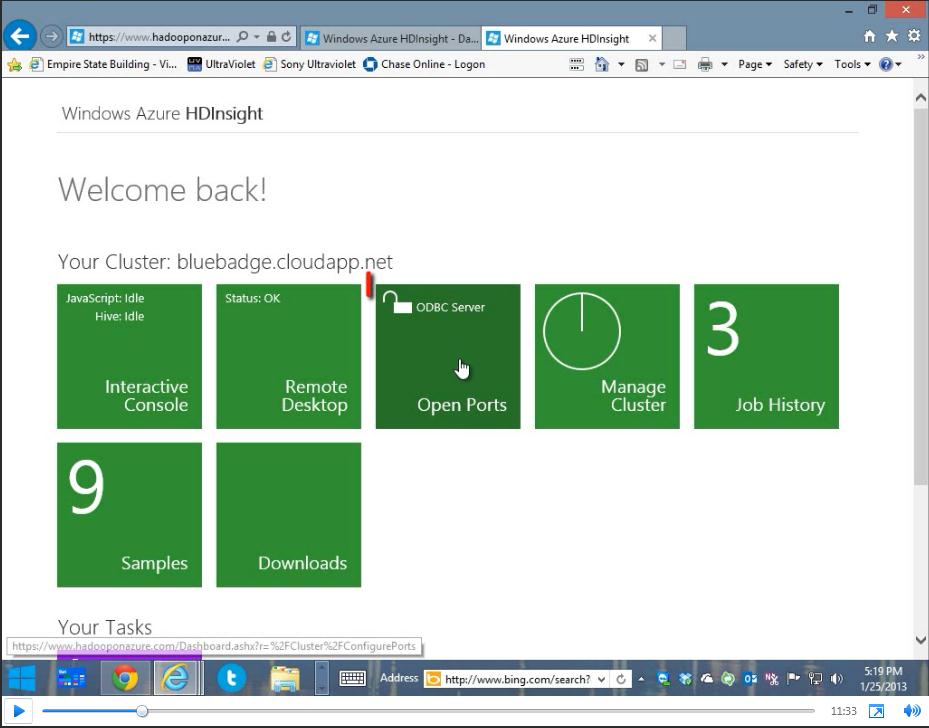MAHOUT_LOCAL is not set; adding HADOOP_CONF_DIR to classpath.
Running on hadoop, using HADOOP_HOME=/usr/lib/hadoop-0.20
HADOOP_CONF_DIR=/usr/lib/hadoop-0.20/conf
MAHOUT-JOB: /data/mahout-distribution-0.5/examples/target/mahout-examples-0.6-SNAPSHOT-job.jar
Topic 0
===========
i [p(i|topic_0) = 0.023824791149925677
information [p(information|topic_0) = 0.004141992353710214
i'm [p(i'm|topic_0) = 0.0012614859683494856
i'll [p(i'll|topic_0) = 7.433430267661564E-4
i've [p(i've|topic_0) = 4.22765928967555E-4
Topic 1
===========
you [p(you|topic_1) = 0.013807669181244436
you're [p(you're|topic_1) = 3.431068629183266E-4
you'll [p(you'll|topic_1) = 1.0412948245383297E-4
you'd [p(you'd|topic_1) = 8.39664771688153E-5
you'all [p(you'all|topic_1) = 1.5437174634592594E-6
Topic 2
===========
you [p(you|topic_2) = 0.03938587430317399
we [p(we|topic_2) = 0.010675333661142919
your [p(your|topic_2) = 0.0038312042763726448
meeting [p(meeting|topic_2) = 0.002407369369715602
message [p(message|topic_2) = 0.0018055376982080878
Topic 3
===========
you [p(you|topic_3) = 0.036593494258252174
your [p(your|topic_3) = 0.003970284840960353
i'm [p(i'm|topic_3) = 0.0013595988902916712
i'll [p(i'll|topic_3) = 5.879175074800994E-4
i've [p(i've|topic_3) = 3.9887853536102604E-4
Topic 4
===========
i [p(i|topic_4) = 0.027838628233581693
john [p(john|topic_4) = 0.002320786569676983
jones [p(jones|topic_4) = 6.79365597839018E-4
jpg [p(jpg|topic_4) = 1.5296038761774956E-4
johnson [p(johnson|topic_4) = 9.771211326361852E-5
 We partnered with Andrew Brust from Blue Badge Insights to integrate OfficeWriter with Hadoop and Big Data. Taking existing OfficeWriter sample projects, Andrew discusses how he created two demos showing OfficeWriter’s capabilities to work with Big Data. One demo uses C#-based MapReduce code to perform text-mining of Word docs. The other demo focuses on connecting to Hadoop through Hive.
We partnered with Andrew Brust from Blue Badge Insights to integrate OfficeWriter with Hadoop and Big Data. Taking existing OfficeWriter sample projects, Andrew discusses how he created two demos showing OfficeWriter’s capabilities to work with Big Data. One demo uses C#-based MapReduce code to perform text-mining of Word docs. The other demo focuses on connecting to Hadoop through Hive.
 Apache Mahout
Apache Mahout









 Big data is a big deal right now, and it’s only going to become a bigger deal in the future, so it makes sense to learn about as many of its aspects as you can, as quickly as you can. Or pick one and learn it very well. Or don’t pick any, if you are a staunch believer in the shelf-life of traditional data warehouses. From a machine learning deep-dive to an open-source buffet, the following five conferences provide educational and networking opportunities for both the specialists and renaissance persons among you. Attending a cool one I’ve missed? Let me know in the comments!
Big data is a big deal right now, and it’s only going to become a bigger deal in the future, so it makes sense to learn about as many of its aspects as you can, as quickly as you can. Or pick one and learn it very well. Or don’t pick any, if you are a staunch believer in the shelf-life of traditional data warehouses. From a machine learning deep-dive to an open-source buffet, the following five conferences provide educational and networking opportunities for both the specialists and renaissance persons among you. Attending a cool one I’ve missed? Let me know in the comments!